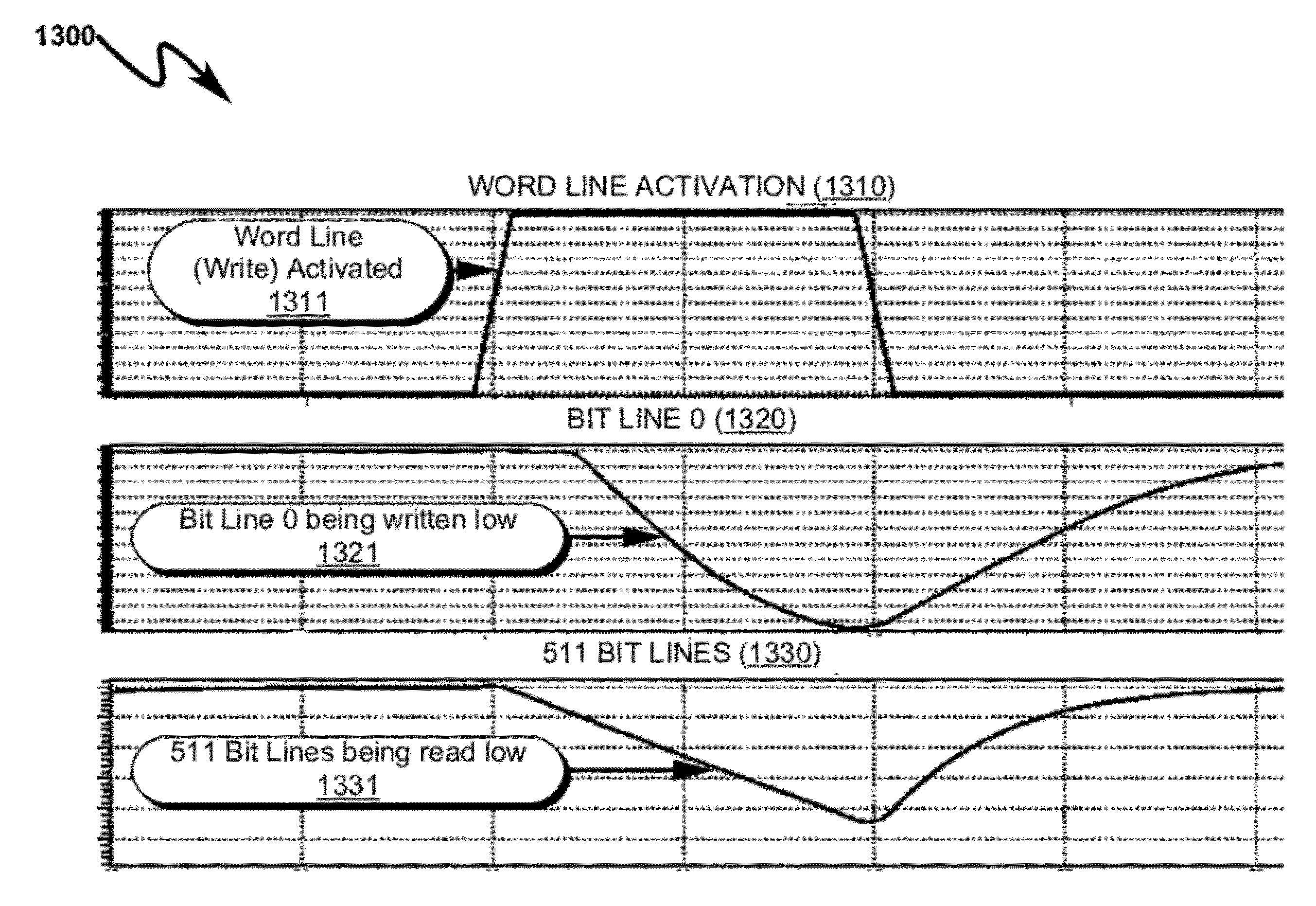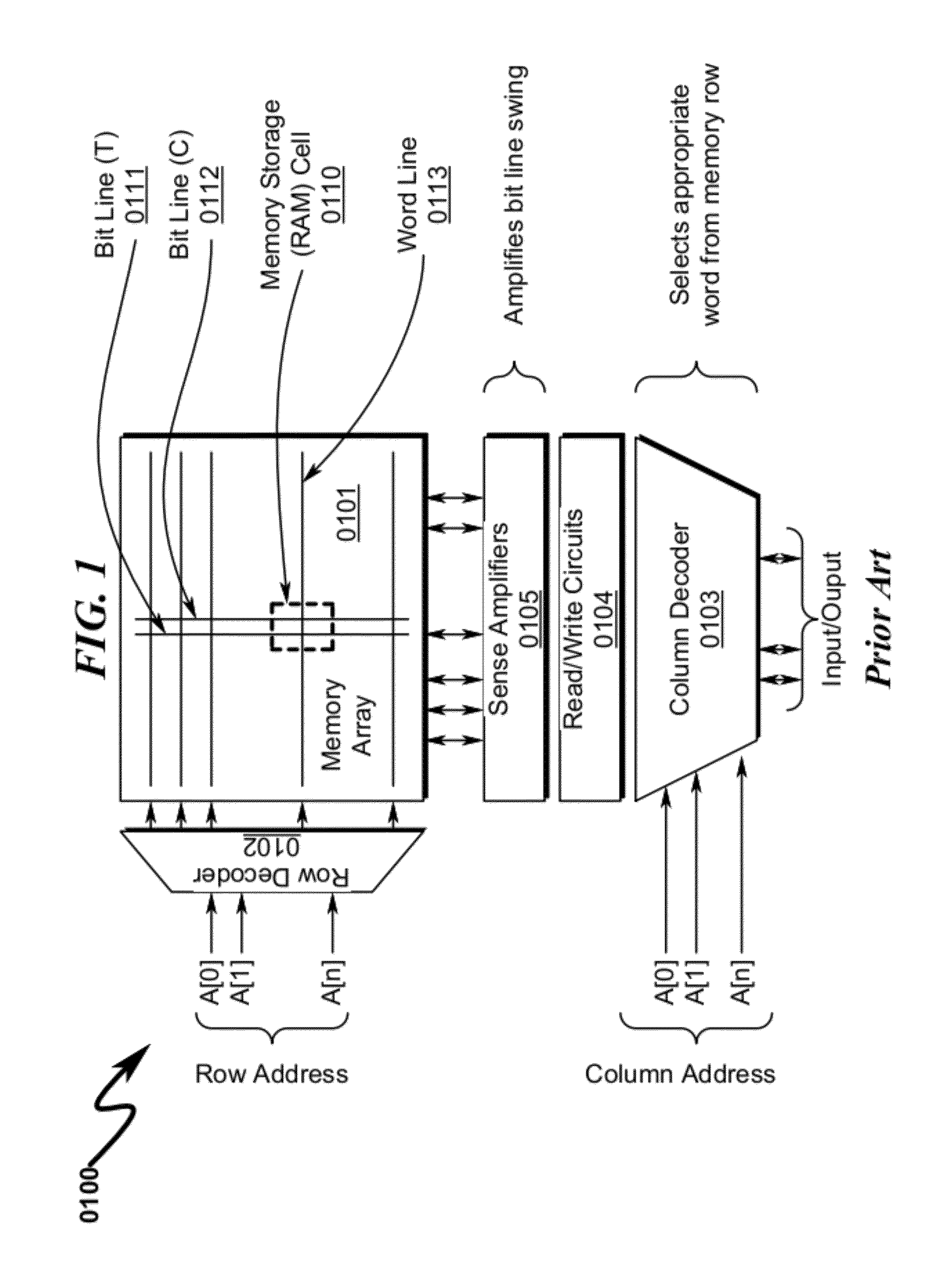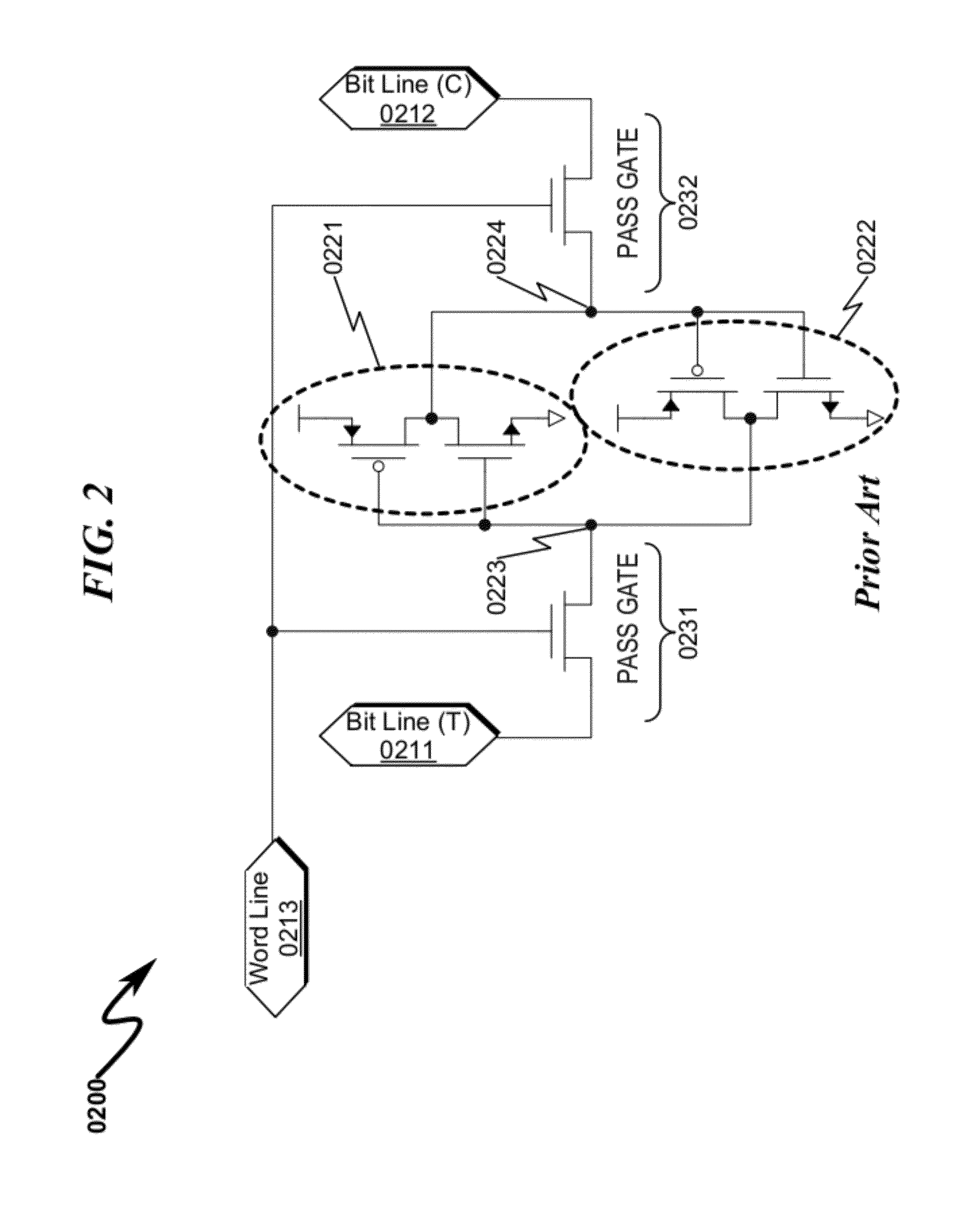Memory Cell System and Method
a memory array and memory cell technology, applied in the field of memory cell systems and methods, can solve the problems of more susceptible to read disturbance, loss of data during read or write operations, behavior getting worse, etc., and achieve the effect of reducing the dynamic power consumed by the memory array
- Summary
- Abstract
- Description
- Claims
- Application Information
AI Technical Summary
Benefits of technology
Problems solved by technology
Method used
Image
Examples
embodiment
MULTI-WRITE Embodiment
Traditional Latch Write-1 Challenges (3500)
[0208]As mentioned in the Background Section, writing a “1” in the traditional 6T memory cell is difficult and requires a second Pass Gate to always have the ability to pull the high side low as shown in FIG. 35 (3500).
Cross-Coupled Latch Overview (3600)
[0209]A fundamental characteristic is the ability to easily write a high (“1) or low (“0”) into the cross coupled latch that makes up many different types of memory cells. A logic schematic of the cross coupled latch without the pass gates is illustrated in FIG. 36 (3600).
[0210]Reading and writing the memory cell latch has traditionally been achieved through additional circuitry that either passes the state of the latch out to be read or forces a high or a low onto the internal nodes of the latch (true (T), complement (C)) to the desired state of either a high or a low. An important embodiment is the ability to accomplish writing the more difficult state, such as a high...
PUM
 Login to View More
Login to View More Abstract
Description
Claims
Application Information
 Login to View More
Login to View More - R&D
- Intellectual Property
- Life Sciences
- Materials
- Tech Scout
- Unparalleled Data Quality
- Higher Quality Content
- 60% Fewer Hallucinations
Browse by: Latest US Patents, China's latest patents, Technical Efficacy Thesaurus, Application Domain, Technology Topic, Popular Technical Reports.
© 2025 PatSnap. All rights reserved.Legal|Privacy policy|Modern Slavery Act Transparency Statement|Sitemap|About US| Contact US: help@patsnap.com



